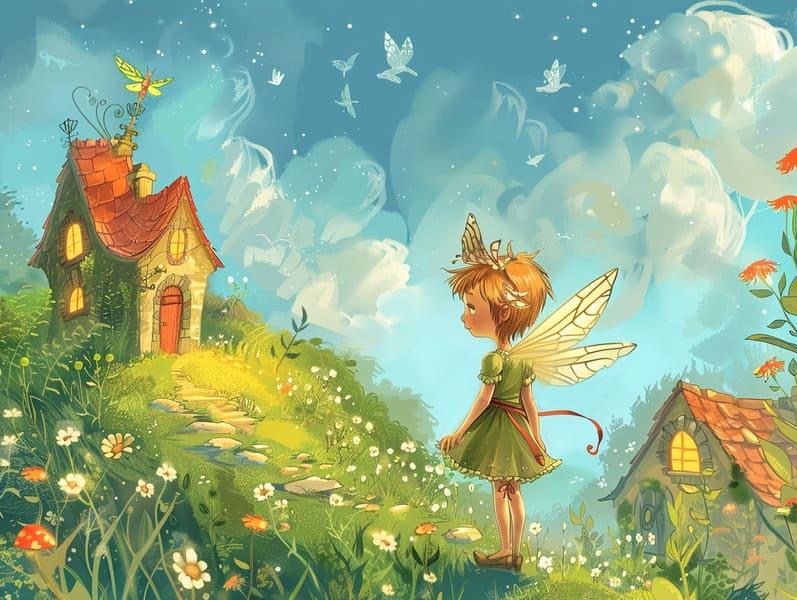The Genesis of Children's Fairy Tales and Its Endless Captivation.
The Genesis of Children's Fairy Tales and Its Endless Captivation.
Blog Article

Fairy tales have deep roots. These tales have been transmitted from one generation to the next far before they were ever transcribed. They originated from a variety of cultures, including Asian traditions. They were initially disseminated among older generations, often carrying themes and messages relevant to the societal norms and beliefs of the time.
The Brothers Grimm, Jacob and Wilhelm (the Grimm brothers), were among the first to compile and publish many of these beloved narratives. Their published works, "Grimm's Story Collection," included classics like "Cinder Maid," "Hansel and Gretel," and "Little Snow White," which have since become essentials in the world of timeless fairy tales. Similarly, the Danish author's magical fairy tales, such as "The Little Mermaid," and "The Little Duckling," have captured hearts worldwide, solidifying their place in the pantheon of treasured fairy tales.
Despite their ancient origins, traditional fairy tales remain as important as ever, especially as kids' bedtime tales. These charming stories are now available in different formats, including vividly illustrated books, enchanting animations, and digital storybooks.
Their continued relevance can be credited to several enchanting factors:
Vital Lessons: Ancient fairy tales often whisper important moral lessons. Tales like "The Boy Who Cried Wolf" teach the benefit of sincerity, while "The Race of the Tortoise and the Hare" illustrate the values of tenacity and unpretentiousness. These tales offer young ones clear distinctions between right and wrong, shaping their moral compass in a gentle yet significant way.
Compassion and Insight: Traditional fairy tales frequently feature personalities facing trials and tribulations, provoking audiences to relate with their struggles and celebrate their triumphs. For instance, "Beauty's Beast" teaches us the merit of looking deeper to acknowledge the inner being of a being, promoting empathy and appreciation.
Cultural Comprehension: Many traditional fairy tales are saturated in the cultural contexts from which they were born. Reading these tales can provide intriguing perspectives into different historical contexts, building a sense of world appreciation and perception.
Creativity and Imagination: The fantastical elements in traditional fairy tales—spells and potions—revitalize children’s innovations. These tales guide readers to extraordinary realms, enlivening fantasy dreams and a sense of amazement that endures a lifetime.
Timeless fairy tales are not only entrancing but also informative. They function as whimsical tools read more in enhancing various cognitive and emotional skills in kids. When classic fairy tales are recited, they cultivate verbal skills by teaching new terms and complex sentence structures. This practice also boosts auditory perception and attention span, as young ones listen intently, enthusiastic to see what happens next.
Furthermore, exploring the themes and characters of old fairy tales can foster critical thinking and evaluative skills. Young readers are taught to pinpoint patterns, foresee events, and understand cause and effect. These analyses also advance young ones communicate their thoughts and feelings, advancing their emotional intelligence.
In today’s technological era, the existence of free fairy tales online has made these fairy tales more reachable than ever. Digital sites and programs provide large libraries of famous fairy tales that can be browsed or played anytime, anywhere. Fairy tales spoken are particularly well-received, sharing an interactive method for kids to immerse in these alluring stories. Narrated books and read-aloud videos bring characters and settings to life, often joined by enchanting background sounds and music that enhance the story journey.
The persistent attraction of ancient fairy tales lies in their ability to adapt to today's society while staying true to their core values. Contemporary renditions of these stories often integrate more representative figures and modern settings, making them understandable to today’s audience. However, the key lessons of daring, sympathy, and even-handedness remain unchanged, continuing to touch children of all ages.
Timeless fairy tales also offer a sense of warmth and predictability. They serve a well-arranged narrative with a transparent beginning, middle, and end, often winding up with the closure of conflicts and the triumph of virtue over wickedness. This foreseeability can be encouraging for young readers, giving a sense of constancy in an variable world.
Ancient fairy tales continue to fascinate and train new generations, maintaining their loveliness and significance in modern society. As children's bedtime stories, they feature a perfect blend of wonder and wisdom, furthering moral values, empathy, and creativity. The existence of internet fairy tales and the commonness of fairy tales narrated confirm that these timeless narratives remain obtainable to new generations.
By guarding and broadcasting these narratives, we continue to exalt the rich tapestry of legends and cultural heritage. Whether you are delving into a colorful picture book, exploring a digital collection, or listening on an sound book, the captivation of classic fairy tales is always within reach. These narratives reveal of the steadfast strength of narratives and its ability to bond us across time and space.
Be it you are exploring a vividly illustrated book, exploring a internet collection, or listening via an read-aloud story, the grace of Grimm's fairy tales is always within reach.
These stories remind us of the endless effect of tales and its ability to hold us together across generations and cultures, making a tie that enchants and educates alike.